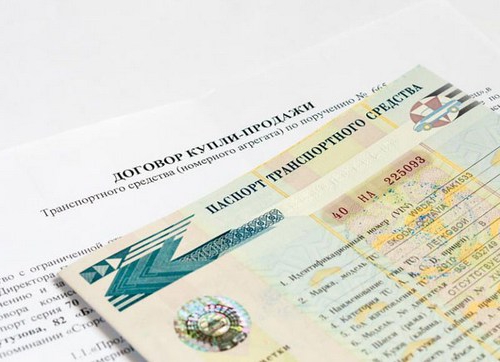Various types of documents are used in various fields of activity of citizens and legal entities. The compilation, storage, circulation and use of securities is the subject of study of such discipline as paperwork. Let us further consider what types of documents exist. 
Record Keeping: General
Documentation support is a special area of activity, consisting in the design, preparation, storage and processing of documents. The correctness and timeliness of making an important management decision will largely depend on how the paper looks and the information in it, how the organization of work with it is carried out. The documentation reflects and takes into account the activities of companies, enterprises, firms. In this regard, paperwork is prescribed by law. When conducting audits, those papers in which the activities of the enterprise are recorded are primarily exposed.
The main areas of office work
At the present stage, this activity includes:
- Ensuring the correct and timely creation of the necessary papers.
- Organization of work with acts (transfer, receipt, accounting, processing, storage, control, systematization, registration, destruction, preparation for archiving).
The regulation of office technology is carried out in several directions:
- Standardization.
- Legislative regulation.
- Development of regulatory, methodological and legal acts of national action.
To organize and conduct office work, professional knowledge and special skills are required. In this regard, for the implementation of this work in institutions and enterprises formed the appropriate units (departments, services). In small companies, secretaries are involved in clerical work; employees authorized by the manager are responsible for the state of the company's securities. A specific place should be provided for each group of documents. As a rule, they are stored in fireproof cabinets. Disciplinary sanctions may be imposed on officials for inappropriate documentation.
The legislative framework
Federal Law governing information and its protection, the obligation to document information is fixed and a number of basic definitions are established. This normative act also regulated the relations that arise during the creation and subsequent application of information technology. Documentation is also required by other laws. In particular, the Civil Code determines the legal basis for the activities of legal entities and the procedure for their workflow. The Tax Code has established standard tax documents. With their help, a record is kept of the commercial activities of companies and individuals, the timeliness of deductions of fees to the budget. The law also established sample documents. So, in the Civil Code there are requirements for the composition of constituent agreements, charters, powers of attorney, and so on. Regulatory acts establish forms of documents that are sent in various ways (by mail, fax, via the Internet). 
Documents of Russia
The administrative system of office management includes a multi-level classification. The following general types of documents are distinguished:
- Organizational and administrative. This category includes protocols, decisions, charters, orders, instructions, regulations.
- Reference and informational. This group includes acts, certificates, telegrams, memos, letters and so on.
- In terms of personnel. In this category are work books, statements, contracts, characteristics, orders and more.

Also distinguish such forms of documents as:
- Patterned.
- Customized.
- Typical (sample documents).
Other classification
Depending on the content of the paper, they can be simple or complex. In accordance with the origin, personal and official are distinguished, at the place of adoption - external and internal. The types of documents differ in terms of storage: constantly, more and less than ten years. Depending on publicity, papers can be unclassified and secret (Sov. Secret, confidential). Types of documents are distinguished by the method of fixation: sound, graphic, machine and handwritten, photo film materials.

Papers may also be urgent or non-urgent. In accordance with the stages, extracts, drafts, originals (originals), copies are distinguished. State documents are singled out in a separate category. Under current law, authorized bodies issue instructions, instructions, orders, decrees, orders, decisions, decrees.
Source documents
These include papers that contain the initial information obtained during the development, research, observation and other human activities. Primary documents in accounting are compiled during business transactions. They act as evidence of the facts. The source documents include, for example, acts, certificates, warrants, invoices, and so on. Unified forms are approved for most of them. For example, special forms of securities for fixed assets, trading, labor, cash settlements have been established. In the event that there is no unified form for any document, the company develops its own form. However, in any case, the following details must be present in it:
- Name.
- Date of preparation.
- Name of the organization.
- The essence of households. operations.
- Meters
- List of responsible employees.
- Personal signatures of authorized persons.

Clerical work
At the direction of the company’s leaders and the initiative of the department heads, various provisions are being developed. This group of documents includes individual and standard acts. The content of the first concerns management units, workshops, departments included in the organizational structure of the enterprise. Standard documents relate to the workshops of the main production. The draft regulation is prepared by the contractor, agreed with the legal department of the organization. In case of comments or objections, they shall be stated in a separate document or in a second copy. The main administrative act at the enterprise is the order of the head. Through this document, the organization’s activities, instructions and decisions, various activities, audit results, work results and so on can be formalized.

Memo Represents a paper in which any question or fact, proposal or conclusion is stated. She can be sent to the head of the company or a higher organization. Memo - This is a type of letter, one of the forms of internal correspondence at the enterprise. She is sent from structural units to any addressee of the organization, with the exception of direct management. A memo may be sent specifically by any company official. These documents have a reporting, proactive or informational nature. Explanatory note - a paper explaining the content of specific provisions of the main act (report, program, plan) or explaining the reasons for violation of discipline or non-execution of an order.
Instructions
These documents are divided into two groups. Included in the first category govern the execution of a certain process in which departments, officials and so on participate. Job descriptions define the duties, rights, functions and responsibilities of specific employees.These documents can clarify the procedure in accordance with which it is necessary to comply with the requirements of laws and orders (orders, decrees, and so on). Job descriptions can be permanent or specific validity. Perpetual documents, however, are subject to revision and verification once every 3-5 years.








